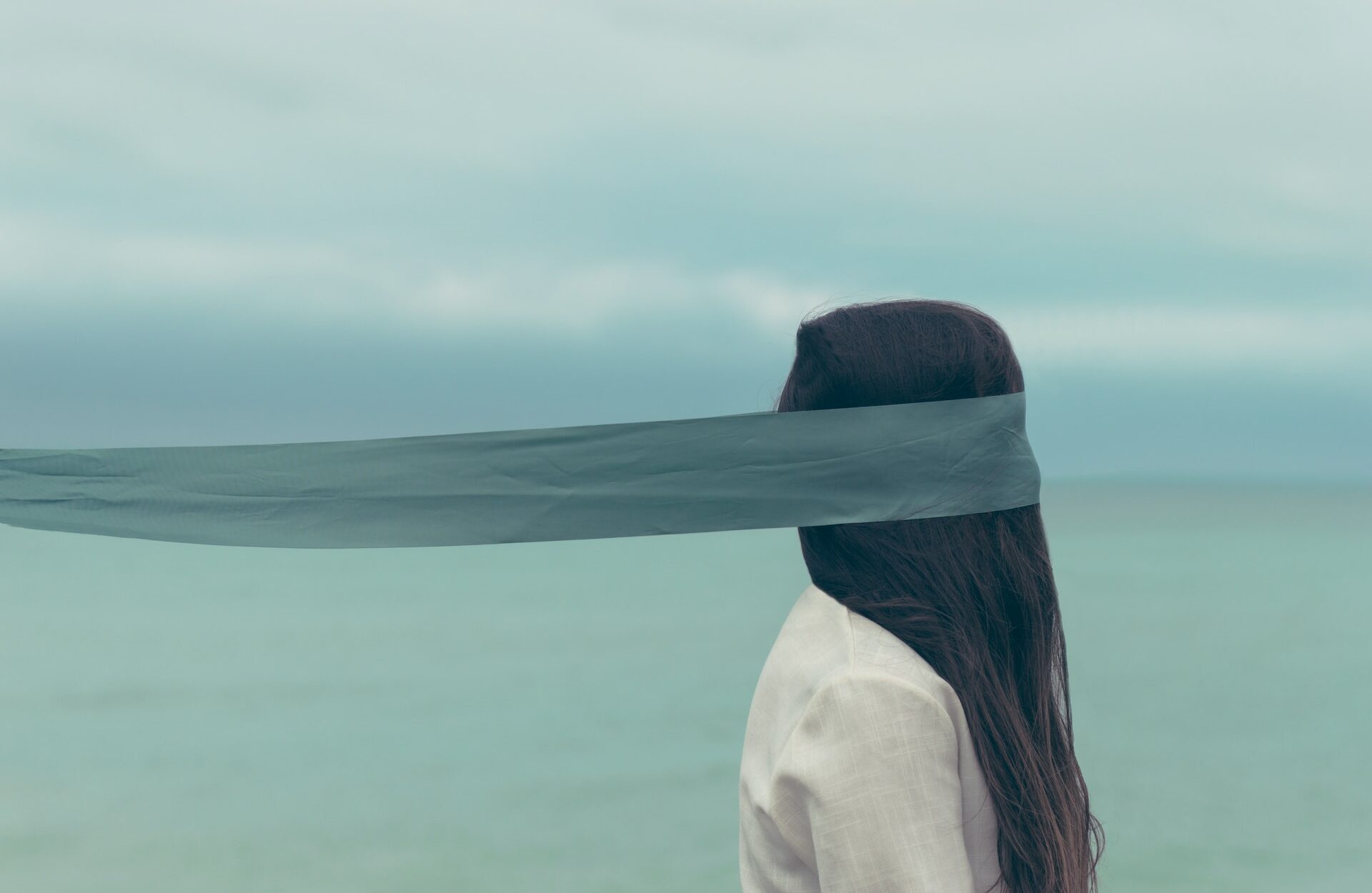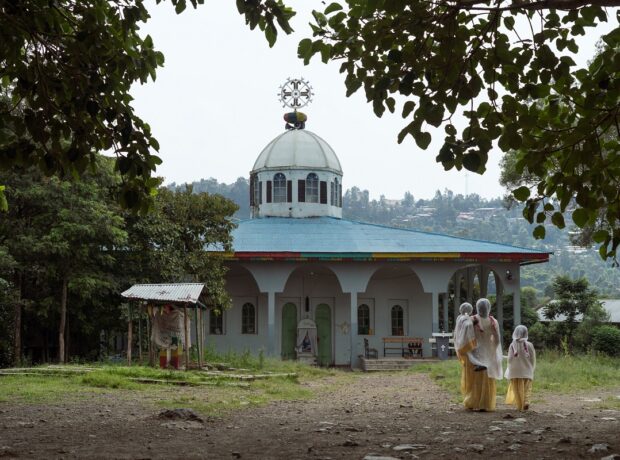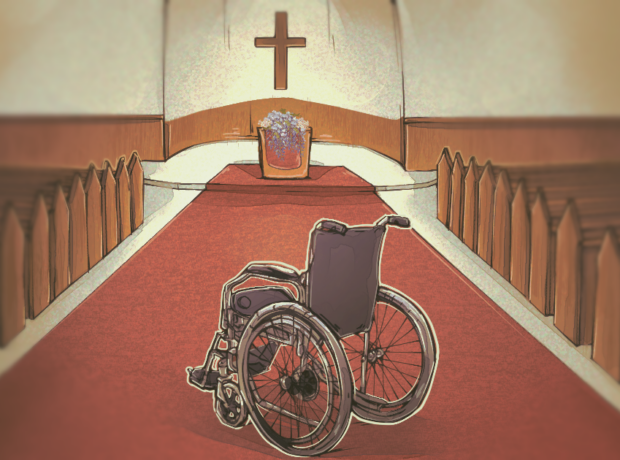The memoir Hijab Butch Blues sees writer Lamya H navigate hierarchies as a queer nonbinary Muslim. Fellow queer Muslim hijabi writer Deenah al-Aqsa reviews.
In many ways, reading Hijab Butch Blues felt like looking in a mirror. It wasn’t an exact reflection by any means, but I could recognise so many of the experiences recounted in this captivating memoir.
I too am a queer Muslim hijabi activist who writes under a pseudonym and isn’t out to family. More than that – in that mirror, I could see my queer Muslim friends beside me, the homophobia in Muslim spaces and the Islamophobia and racism in queer spaces.
At the forefront throughout were their tumultuous experiences – from introducing their partners to family as “friends”, to latent Islamophobia at airports and racist microaggressions at school and work.
The book is titled as an ode to Leslie Feinberg’s award-winning 1993 novel, Stone Butch Blues. Like its inspiration, Hijab Butch Blues delves into what it means to be a gender nonconforming activist, while navigating the biases and prejudices held in queer circles.
Lamya explores what it means to be Muslim and South Asian in these spaces, too, unafraid in calling out colourism and classism in the communities they are part of.

UK version of “Hijab Butch Blues” by Lamya H. The book is available at Waterstones and Amazon.
The author does this by masterfully weaving Islamic stories into their own, making Hijab Butch Blues engaging yet quietly introspective. Lamya explores various facets of their experiences geographically as well – as a dark-skinned Desi child attending a school in the Middle East, and as an adult immigrant in a post 9/11 United States.
The most familiar element of this memoir was Lamya’s coming out journey. That is to say, they don’t – not to their family, anyway. They write how “it still feels unthinkable” to tell their family they’re gay, or anything about their relationship status, and that this might be the case forever.
Of the people the author does come out to – their doctor, their friends and one friend’s parents – I could empathise with Lamya, and the “complicated calculation” they felt obliged to make each and every time they decide to come out to someone.
There’s nuance to their story, which makes it clear that homophobia isn’t specific to Muslims but is still rampant in many Muslim spaces. They describe how homophobia from Muslims feels “like more of a betrayal” to them because of how close-knit the Muslim community is – particularly in times of adversity where community is needed the most.
But this is the same community, the same family, that Lamya notes would preside over funeral prayers and who they stand side-by-side with during long Ramadan prayers.
That resonated with me. Muslims are no strangers to being shunned for being different, so it frustrates me, too, that cultural conservatism still lingers in the Muslim community. The homophobic attitudes relayed in Hijab Butch Blues are all things I have heard before: that queerness is unnatural, a mental health condition, or the result of jinn (spirit) possession.
Anecdotally, I know of how these exact attitudes lead to LGBTQIA+ Muslims being subject to conversion practices, as if queerness is something that needs fixing.
For me, it made perfect sense reading that Lamya introduced their partner (Liv) to their family as a friend, not a girlfriend. Liv and Lamya agree a set of rules that they follow so the family are none the wiser about the true nature of their relationship. Among my queer Muslim friends, this is a common story because it’s an act of self-preservation.
Lamya critiques the common presumption among their LGBTQIA+ peers that the only way to be authentically queer is to be out to family. A brown queer friend of theirs automatically assumes that Lamya came out to their parents already, even going so far as to say that Lamya owes “this visibility to the queer community”.
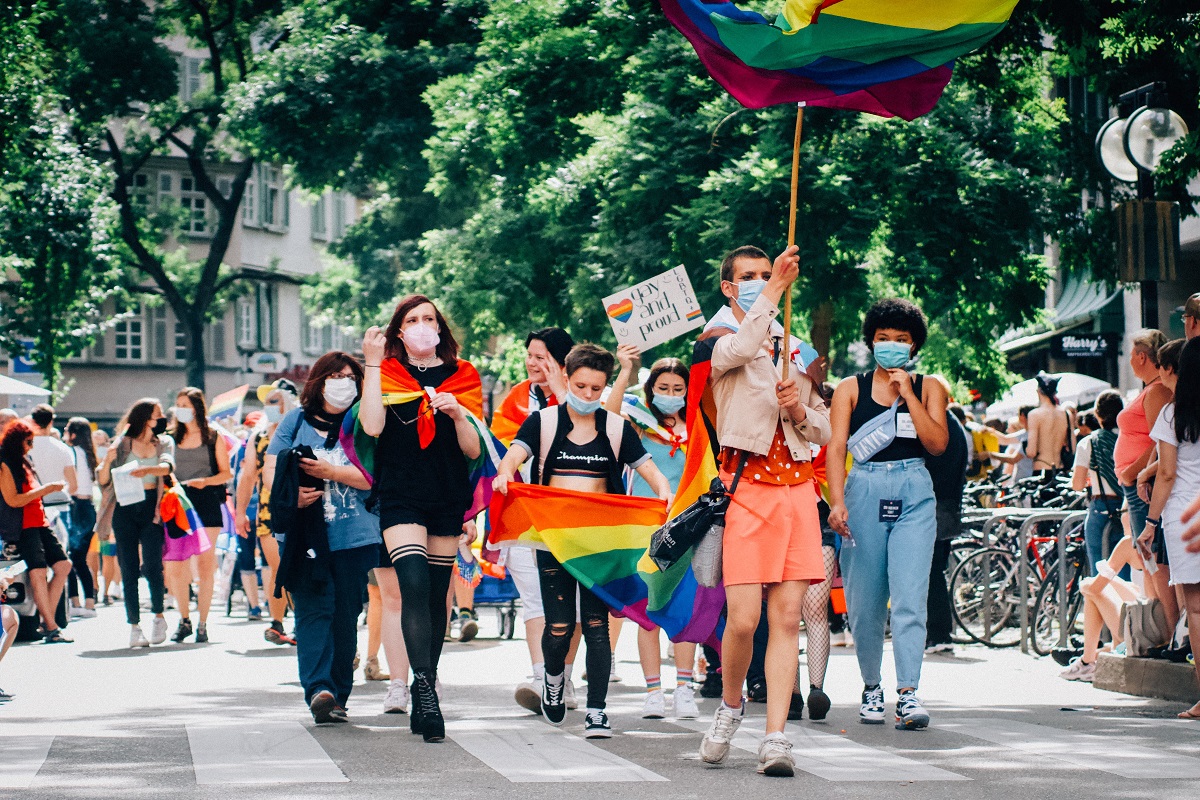
Advocates for queer visibility on Christopher Street Day 2021 (CSD) in Stuttgart, Germany. Picture by Christian Lue.
I’ve had this conversation so many times: explaining why the increasingly romanticised vision of coming out doesn’t match the reality for every queer person. Their hesitation feels normal to me: Lamya doesn’t know whether to trust someone, not just in telling others but in this information somehow getting back to their family or their community through the Muslim grapevine.
Their frustration at this common all-or-nothing view about coming out (that family who don’t accept your queerness should be cut off forever) is something I share.
The author says it perfectly: “This is why my story has to remain untold: I have everything to lose.” They write about how important their family’s love for them is, and vice versa, and that coming out could mean losing both.
I admire Lamya’s courage when they come out to their Muslim doctor – an “aunty doctor”, in Lamya’s words.
Lamya is initially encouraged and relieved by the sight of Islamic art in the doctor’s office, the familiarity of an Egyptian doctor. But when the doctor asks Lamya how they could know for sure that they aren’t pregnant, Lamya stumbles into coming out to her.
The doctor’s judgement that follows Lamya coming out is uncomfortably recognisable: first, she asks if Lamya’s parents know, and then she asks if Lamya drinks or takes drugs. After Lamya answers “no” to both, the doctor questions why Lamya still wears hijab.
It feels like a sickening litmus test on how the doctor views Lamya as she asks, “What kind of gay are you?” Once again, Lamya is asked to justify who they are.
It feels the same when the author writes about being in an LGBTQIA+ centre for a poetry event, and two women ask how Lamya identifies in terms of sexuality. Thankfully, Lamya manages to avoid the question, but the couple then patronisingly thank them for being “such a good ally”.
The implication is that because of Lamya being visibly Muslim, they have to prove their queerness in a queer space. Attempts to judge, exclude and gatekeep feel common, not just in queer spaces but Muslim ones too.
Lamya, who is gender nonconforming, also writes of how the “rigidity of gender” follows them “like a punishment everywhere, across oceans and continents”. The author writes about feeling patronised by a friend who says Lamya would “make a beautiful trans man”.
A stranger in New York spits on them and demands to know if Lamya is a man or woman. When flying, Lamya is addressed repeatedly as “sir” by airport security.
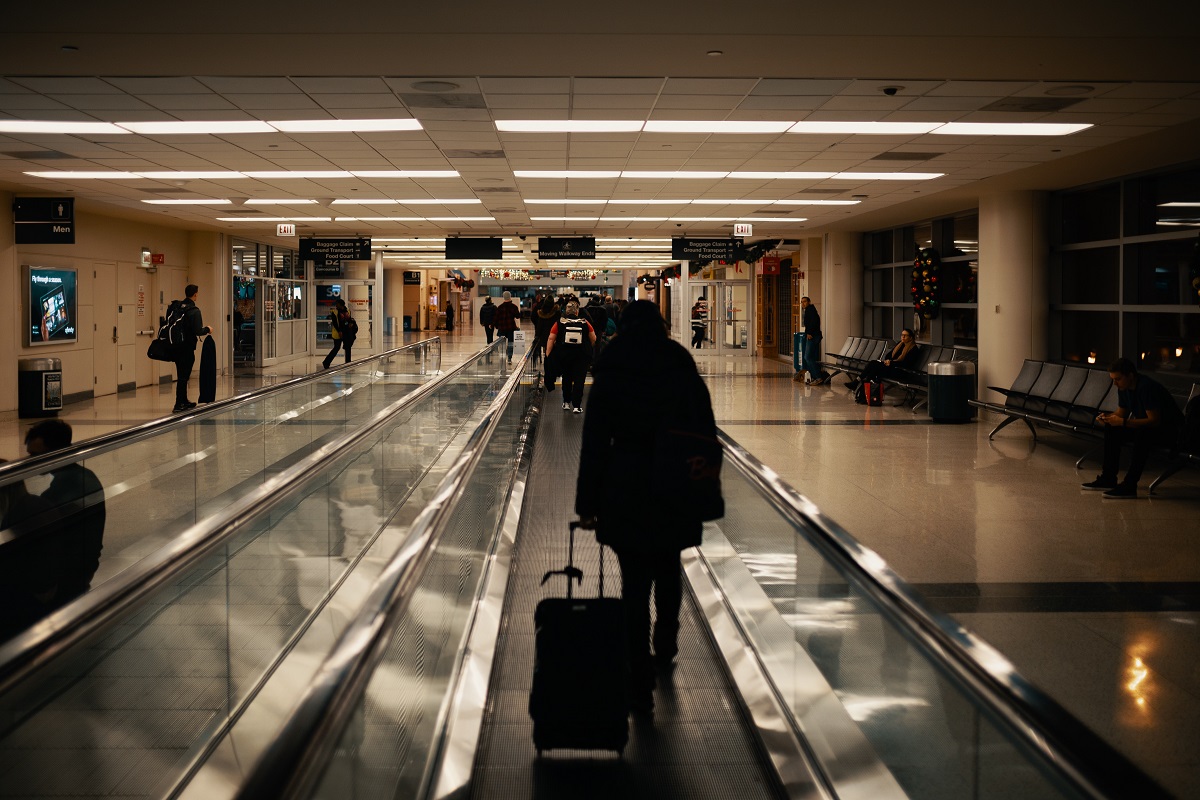
The “rigidity of gender” is everywhere, even at the airport. Picture by Josh Sorenson.
But not all interactions are negative. Lamya recounts the time when they came out to “the most Muslim” of their friends, Rashid and Salwa, who are surprised yet incredibly supportive. Rashid even acknowledges that he is “prone to saying ignorant things about queerness”.
Lamya remembers examples of this, like when early on this couple “bemoaned the ‘homosexual agenda’” – as well as how they have grown in their allyship since then, making queer friends and confronting their prejudices. After Lamya comes out to him, Rashid asks Lamya to hold him accountable if this happens.
Reading about this couple’s journey in allyship to queer Muslims, not just Lamya, gives me hope that change is possible within religious communities, one friend at a time.
After moving to the United States for university, Lamya recalls “deciphering the hierarchies of this country” – from white supremacy to Arab and Muslim names alone rousing suspicion. Lamya writes that their “brown hijabi Muslim body is seen as scary, disempowered, both hypervisible and invisible at the same time”.
To that end, Lamya is repeatedly asked for ID, on buses, in museums, in laboratories. Thankfully, Lamya keeps photocopies of all their legal documents with them at the advice of their uncle. But why is this level of foresight and vigilance necessary?
Even in multiracial and politically progressive circles, Lamya’s hypervisibility as a Muslim others them. At a queer gathering, the author recalls being singled out by one person who admits he was glad to have spoken to Lamya, and that otherwise he would have “studiously avoided the religious Muslim in the room”.
Worse still, Lamya is belittled by family for wearing hijab. In a toxic mix of Islamophobia and classism, Lamya is told by relatives that they look like a servant in hijab, that hijab is not in their culture and would hinder assimilation in the United States.
Now, an adult, Lamya admits that as a child, they felt so othered that they used to think they were a jinn (a spirit, believed in Islam to be unseen by humans), simply for the colour of their skin. They describe feeling invisible, but also being “this scary, disgusting creature” to white people and light-skinned Arabs.
I found this a fascinating and fitting analogy, because practically every Muslim I know has a story about someone who was possessed by a jinn. And in Hijab Butch Blues, it’s dispossession that empowers Lamya to challenge this mindset – in themself and others.
This time, Lamya’s friend Rashid is the one to call Lamya out, over their attitude of assuming white and light-skinned people are better than them.
Rashid and Lamya compare their upbringings. Rashid as a Black Muslim in America who was raised on stories about Malcolm X and the Black Panthers. Lamya’s family, meanwhile, reminisced “fondly about being colonised by the British”.
The contrast between those upbringings is night and day, of empowerment and disempowerment respectively.
Other stories in Hijab Butch Blues also remind me of the colourism still rampant in Desi communities. Lamya writes about being treated differently from their “light skinned” brother who is their mother’s favourite. Pressured by family to wear makeup, Lamya recalls being made to look “three shades lighter” than they usually are.
The most memorable part of this book was the author’s readiness to address and challenge the many ways that Islam is weaponised by religious leaders to oppress people, or to justify erasure. For instance, suicide is traditionally seen as a major sin in Islam, which is why mere discussion of suicidal thoughts are often blanketed with stigma and shame, stopping preventative action from being taken.
Stepping away from theological debates, though,
I want to focus on the reality for LGBTQIA+ Muslims. There have been far too many news stories about queer Muslims contemplating suicide or worse, dying by suicide.
These are the stories that make the headlines, though, and given the statistics about LGBTQIA+ people considering or dying by suicide – LGBTQIA+ young people in particular, I wouldn’t be surprised if those statistics are a vast underestimate.
But Lamya is open about their struggles, saying early on in the book that they are 14years old when they want to die. They go into why they feel like this – that they are “acutely ashamed” and “mortified” of their feelings for women.
Even without a queer vocabulary or knowledge of acronyms, Lamya knows “instinctively” that those feelings are out of place, making them feel so alone that they want to die.
The author’s lightbulb moment comes in Quran class, while reading about Maryam – the Arabic name for Mary, mother of Jesus. Lamya’s classmates read aloud about Maryam during childbirth, where she says that she wished she had died. In that moment, Lamya feels understood, in a way that they weren’t before.
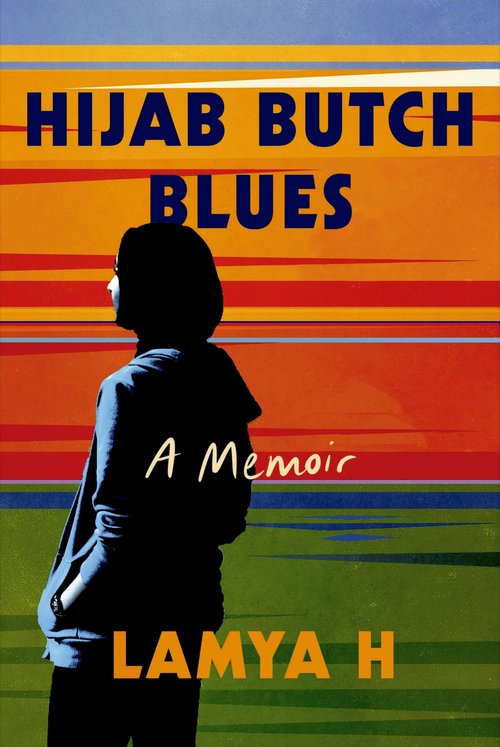
US version of “Hijab Butch Blues” by Lamya H. The book is available via Amazon, Barnes & Noble and Bookshop.
With a curious mind, Lamya theorises that Maryam could have been queer, because she continually insists that “no man has touched her”. A teenage Lamya earnestly asks their teacher: “Did Maryam say that no man has touched her because she didn’t like men?”
The response Lamya gets from the teacher is the usual heteronormative answer I’ve heard in Quran class myself, but it doesn’t matter. With this simple yet monumental realisation that Lamya is not alone in feeling like this, they are empowered to keep living.
It was also enlightening for me to learn more about things that my teachers have erased. One of the most important figures in Islamic history was Hajar (Hagar), a Black woman who was enslaved, and also the mother of Ismaeel (Ishmael). I never learned she was Black, nor that she was enslaved.
That speaks to the wilful erasure of her story and the virulent anti-Blackness in the Muslim world that lingers to this day. Lamya, meanwhile, questions everything. They admit that “the story gets murky” when it comes to Hajar’s agency, or lack thereof, in this story given the circumstances. There is no hesitation on Lamya’s part in acknowledging these gaps of knowledge.
But where is that honesty about the unknowns from conventional, “traditional” Muslim leaders as they cherry-pick scripture to justify oppressing people? The story of Lut (Lot) – of Sodom and Gomorrah – is frequently the basis for much of religious homophobia, despite there being nuances and uncertainties.
A single Quranic verse is used to justify intimate partner violence because the Muslim mainstream is still beholden to ancient interpretations that are almost entirely made by cis straight men. Where is the Muslim community’s curiosity in challenging long-held attitudes of prejudice based on difference?
So while Hijab Butch Blues left me with no shortage of questions of my own, it also was a comforting read.
I know first-hand how easy it is to feel alone, and for a time, I wondered if I was the only one out there – the only lesbian on the planet who wore hijab and prayed five times a day.
Even after I found other queer Muslims who are also practicing and embracing of their faith, I thought I was the only one to write under a pseudonym about my experiences, who politely declined every time someone urged me to come out to my family.
This book is testament to the fact that I am not alone at all. There is comfort in that solidarity, and it is a reminder that our mere existence is a form of resistance.
Hijab Butch Blues can be bought via Waterstones and Amazon.
Read more:
- When black means power and solidarity: The women’s strike and ‘Black Protests’ in Poland
- “If you can see it, you can be it”: The impact of Black role models and Black creative spaces
- Six survivors remember Spain’s brutal anti-LGBT laws
Featured Image by Oscar Keys.
